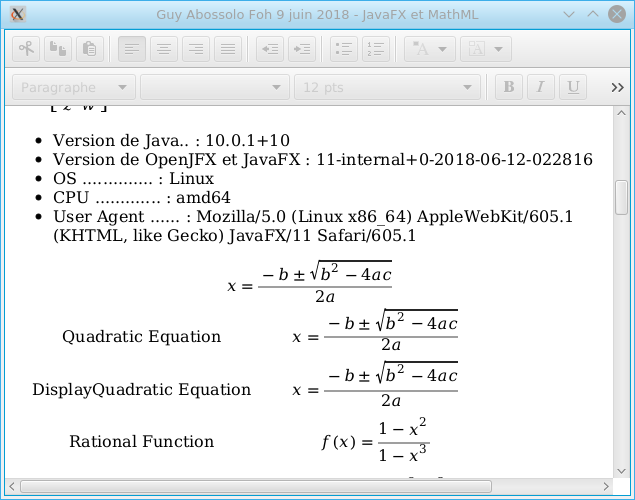I think that the problem is related only with the vertical size of each element : I notice that the size of the cursor is right outside the mathematics text but when we move it through the mathematics text, the cursor size is far much lower than text size. All horizontal sizes seem good, by example a \<mtext> followed by a \<mrow> in a
Which part of code deals with vertical size ?

















The purpose of this issue is to repair MathML display in WebView.
When I discovered that JavaFX could manage MathML, I also discovered that it was buggy. Becauseof MathML is rendered with WebKit, I compared with other WebKit based web browsers. I also noticed that since 2016 that those web browser make good progress with MaltML display. First I thought that the differences were due to outdated WebKit version used by JavaFX but last releases, with an uptodate WebKit version, show that the problem is the same.
I contacted F. Wang from Igalia who worked to port or improve MathML support in FireFox and later in WebKit. He confirms that it was a bug in JavaFX not in WebKit witch displays MathML correctly.
As he suggested me, I wrote to the JavaFX mailing list and had a short discussion about this issue on OpenJDK.Java.net :
http://mail.openjdk.java.net/pipermail/openjfx-dev/2017-December/021112.html https://bugs.openjdk.java.net/browse/JDK-8147476
So, as suggested by mainteners, I'm trying to find by myself what's wrong with MathML in javaFX HTMLEditor.
I tested all applications with Mozilla MathML Torture Test (https://developer.mozilla.org/fr/docs/Mozilla/MathML_Project/MathML_Torture_Test)
Could someone help me ?